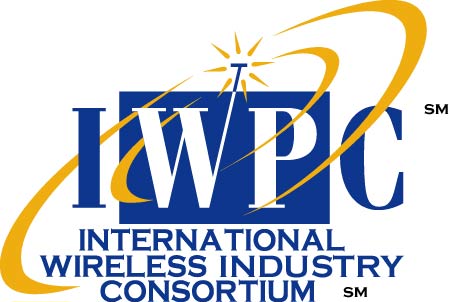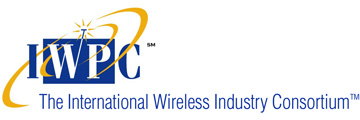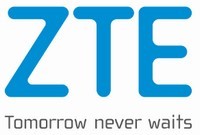Antenna Innovation and Evolution
How do RAN sites and systems evolve towards 5G? Considering Massive-MIMO and Distributed-MIMO. How does the industry measure active antennas with beamforming features?
Hosted by:

&
When
November 7-9, 2017
Introduction
BTs mobile group EE recently demonstrated 'groundbreaking' pre-5G mobile backhaul bridging the gap between 4G and 5G connectivity. They see this as an important stepping stone towards the technology which will enable new vertical markets, the Internet of Things (IoT) and other connected technology use-cases. This workshop will give IWPC members to discuss and debate massive MIMO trials and experiments carried out by BT and Bristol University enabling far field array characterisation, multi-element handset performance as well as experiments to improve the understanding of the massive MIMO radio channel under mobile conditions.
Workshop Goals
- Better understand the critical role of the antenna facet in the delivery of 5G
- Assess the potential for massive MIMO at sub-6GHz frequencies
- Examine mmWAVE array gain / beamforming
- Explore antenna and RFFE architecture/designs for Future Smartphones
Agenda
|
DAY 1 Tuesday
|
University of Bristol lab tour of CSN to include the 5G lab |
Registration at hotel at 15:30 pm - group will then depart for a short 10 minute walk to University |
||||||||
|
19:00 |
Evening Reception & Registration |
At Hotel |
||||||||
|
DAY 2 Wednesday 07:00 |
Registration and Coffee |
|||||||||
|
08:00 |
Welcome and Introductions
|
 |
||||||||
09:00 |
Opening Remarks and Keynote
|
Keynote Presentation
Principal Network Architect
|
||||||||
|
10:00 |
Networking Break |
|||||||||
|
10:40 |
Service Provider Perspectives
|
Deployment Challenges for Massive MIMO Arrays at 3.5 GHz
Technical Specialist
Massive MIMO – the Challenge for Passive Antennas
Radio Technologies Researcher Network Authority
|
||||||||
|
12:00 |
Networking Lunch |
|||||||||
|
13:00 |
Service Provider Perspectives, continued
|
Operator Perspectives on Antenna Evolution towards 5G
Senior Researcher
ASS (5G) Validation and Evaluation
Site Infrastructure Expert
Application of Adaptive Antenna Systems for LTE Capacity Relief and Quantification of Gains
Director
|
||||||||
|
15:00 |
Networking Break |
|
||||||||
|
15:40 |
OEM Perspectives, continued
|
Massive MIMO Implementation
TDD Product MKT & Solution Team
Using Sub-6 GHz Full Complexity Hybrid Massive-MIMO Technology for 4.5G and 5G
CTO
|
||||||||
|
17:00 |
End of Day Panel |
|
||||||||
|
17:45 |
Adjourn |
|||||||||
|
19:00 |
Networking Dinner - SS Great Britain |
Bus transportation provided to depart hotel at 18:30 |
||||||||
|
DAY 3 Thursday 07:00 |
Registration and Coffee |
|||||||||
08:00 |
Keynote
|
Keynote Presentation
Professor, Radio Systems and Engineering
|
||||||||
|
08:40 |
OEM/System Perspectives
|
Deployment/Planning of AAS Systems
Senior Expert
Practical Implications of Deploying M-MIMO in Operational Networks
Director, Mobile Network Engineering
|
||||||||
|
10:00 |
Networking Break |
|||||||||
|
10:40 |
OEM/System Perspectives, continued
|
Optimal 4T4R Antenna Configurations for LTE
CTO
Leveraging Proven Multi-User MIMO Systems
CTO
|
||||||||
|
12:00 |
Networking Lunch |
|||||||||
|
13:00 |
Technology Enablers
|
What Complexity is Needed for Mid-Band UEs
Master Engineer Research
Meeting Use-Case Demand for 5G Antennas
Senior Antenna Design Engineer
Hybrid MIMO Enabled by Holographic Beam Forming
CTO
|
||||||||
|
15:00 |
Networking Break |
|||||||||
|
15:30 |
Testing and Validation
|
Characterizing and Verifying Massive MIMO / Beamforming Antennas
Principal Technology Manager
Pride and Prejudice: The Story of 5G Channel Modelling and Why you Should Care
Lead Technologist
OTA Measurements for 5G and mmWave Specific Challenges Using Reverberation Chambers
Senior Microwave Engineer
|
||||||||
17:00 |
Closing Panel |
|
FAQs
- What is the deadline for presentation/handout materials?
- What can I do to prepare for speaking an at IWPC workshop?
- Who are the attendees?
- What are the costs/registrations fees?
- Hotel information?
- What are the travel options from the airport to the hotel?
- Are there any audiovisual requirements?
- Will business cards be collected?
- What is the dress code?
- How will handout materials be provided?
- What is the deadline for
presentation/handout materials?
Deadline for electronic version of presentation/handout materials: Monday, October 30, 2017
- What can I do to prepare for speaking an at IWPC workshop?
Click on the link below for a short video guide regarding preparing for and improving your IWPC presentation:
- Who are the attendees?
- We do not permit the Press.
- We do not permit Analysts.
- We do not permit Consultants.
- We do not permit 3rd party sales reps.
- We only permit "first hand knowledge experts" in business and technology issues, prepared to contribute to the discussion.
- What are the costs/registrations fees?
ALL Hosts, Speakers, Panel Members and Attendees will be asked to cover out-of-pocket workshop costs such as conference room costs, food (Social Reception plus First Day breakfast/lunch/dinner plus Second Day breakfast/lunch plus Breaks), audio/visual costs, etc.
These costs will be $999 (USD) per person. (For IWPC Members only.)
ALL Hosts, Speakers, Panel Members and Attendees will be asked to pay this fee in advance with either Visa, MasterCard, American Express, cash, personal check or business check. Make checks payable to IWPC.
- Hotel information?
Marriott Bristol Royal
College Green
Bristol, UK BS1 5TA
Phone: +44 117 925 5100
Hotel WebsiteThe IWPC room block rate is 124£/night, inclusive of VAT. The deadline for hotel reservations is Tuesday, October 17, 2017. After that date, rooms cannot be guaranteed at the IWPC rate. You can make your reservations on-line at: book your group rate for IWPC
- What are the travel options from the airport to the hotel?
https://www.marriott.co.uk/hotels/maps/travel/brsry-bristol-marriott-royal-hotel/
- Are there any audiovisual requirements?
A Computer Projector will be available for the speakers.
In addition, we audiotape all presentations and the interactive discussions. Post workshop, presentations are made available to IWPC Members on the IWPC WEB site, along with “recordings” of all presentations and panel sessions.
- Will business cards be collected?
Business cards will be collected at the door from all attendees. We will make copies of these cards, which will be available to all who provided a business card.
- What is the dress code?
Business casual suggested. No ties, please!
- How will handout materials be provided?
For ALL IWPC members:
All IWPC members are invited to submit materials to be included in the online workshop folder in the IWPC Research Library. This should NOT BE SALES MATERIALS. Rather, we suggest it contain technical information about your technology as it relates to the workshop topics.
For all companies who will be making a presentation at the Workshop:
You are invited to submit an advance copy of your presentation, complete with graphics and illustrations.
These materials will be included on the IWPC website Research Library.
Please submit these materials either by email, as a Word for Windows file, Power Point files or PDF files.
- Go to www.iwpc.org
- Click on IWPC Activities Tab
- Under Workshop: Antenna Innovation and Evolution
- Click on Submit Presentation Proposal. Complete the form and attach your presentation.
- Once we receive your presentation we will send an email confirmation.
AS BACKUP, PLEASE BRING AN ELECTRONIC COPY USB STICK WITH YOU!











